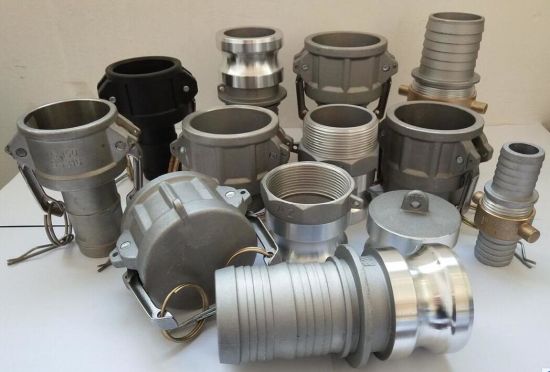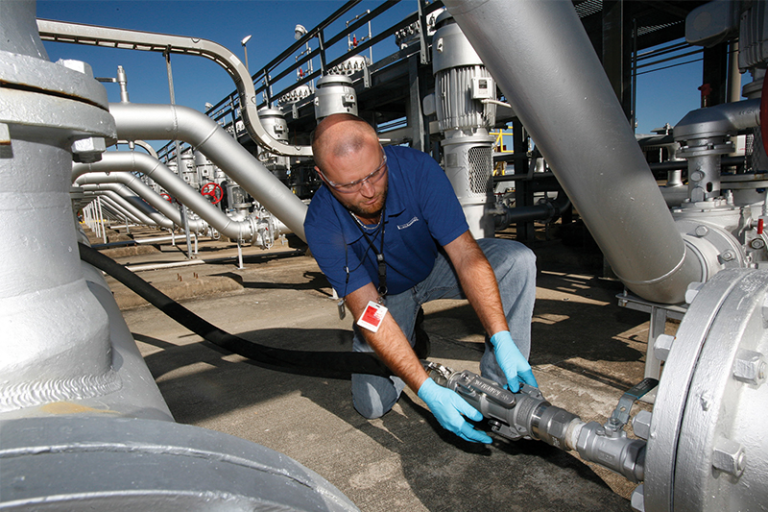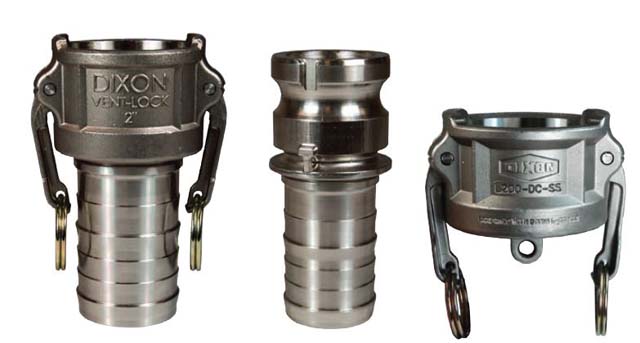Cam and Groove

Overview
At Hose & Rubber Supply, we offer OSHA-approved classes to our customers that are focused on hose, belt power transmission, and operations safety. One course we offer revolves around camlock training. A camlock, also called cam and groove, is a quick connect coupling system that consists of a “male” adapter and a “female” coupler.
Function and Design
Cam lock couplings function with a male half (adapter) and a female half (coupler) that lock together.
The adapter has a groove on the outside of it that is engaged by the “cam arms,” located on the outside of the coupler, to create a seal against the gasket inside of the coupler. The gasket sits at the bottom of the female coupler and the pressure from the “cam arms” pulling the groove down, draws the male adapter to push against the ‘seal’ or gasket.
In addition, both the adapter and the coupler will have a connection side that will be either a threaded end or a shank-end to insert in a hose.

Sizing
Cam and groove fittings most common sizes are 1” through 6”. They are also available in 1/2” and 8” though these are used less often and the coupling industry doesn’t have a single standard for those particular sizes – as such different brands of those sizes may not fit correctly.
Of note, 1-1/4” and 1-1/2” couplers and adapters do work together as the cam and groove portions have the same dimensions in both sizes. In the 1-1/4” and 1-1/2” only the shank or thread-end connection side is a different size.
Speaking of size, pressure-ranges on camlocks change depending on both the size and the method the fittings are attached with!

Materials
Fittings are available in several different materials, and they can be domestic or import. Highly common materials used are; aluminum, brass, stainless steel, and polypropylene. Other readily available materials include; aluminum hard coat, malleable iron, plated malleable iron, Hastelloy, Kynar and nylon.

Specialized Locking Cams
Locking cam systems can add a much-needed safety factor to your application. Standard cam arms that don’t have a locking mechanism could inadvertently catch on something and pop open, resulting in the product being spilled. Locking cams are often used for petroleum, chemicals, or any application where safety is of the utmost importance.
There are various methods of keeping cams from accidental disconnection. The most basic is a cotter pin inserted through the closed cam arm, preventing the user from being able to inadvertently open the camlock.
In newer designs, the coupler arms lock. This means an operator has to deliberately and intentionally disconnect the mechanism before the system can be uncoupled. Locking designs can offer an increased measure of security over cotter-pin methods where lost or broken pins can’t always be replaced quickly.
Many locking cam systems are even designed for use in rugged or cold-weather environments and Hose and Rubber can help direct you to a style best suited to your application and safety needs.
It’s important to note that dust caps and dust plugs are not to be used in pressure applications, for safety and environmental reasons.
- Cam and groove couplings are not recommended for use with solid PTFE gaskets as a soft filler is required to give them proper sealing.
- Polypropylene cam and grooves should not be mixed with metal fittings.
For more information, contact us.

